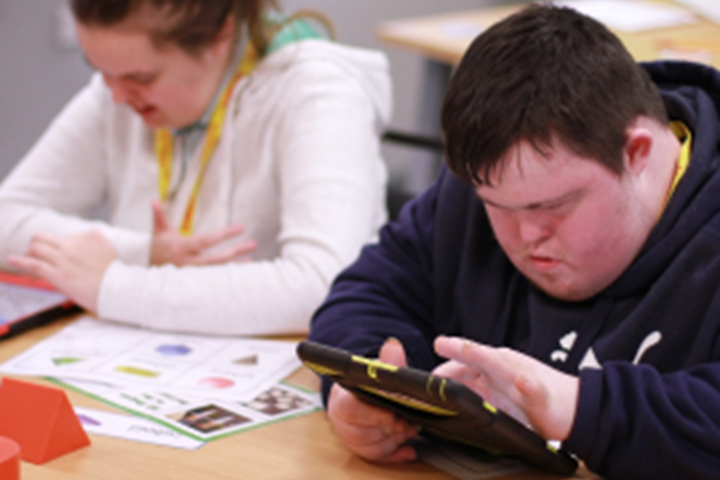Putting neurodiversity at the heart of our approach to SEND - part 2
In the second part of his blog series on neurodiversity, Simon Beer, Head of Service for Haringey Adult Learning Service, explains why a strengths-based approach is not a tool to label individuals, but is about valuing learners equally.
Simon BeerNeurodiversity is an idea that emerged in the 1990’s which asserts that atypical (neurodivergent) neurological development is a normal human difference that is to be recognised and respected as any other human variation.
It has a particular resonance for those working in the field of Specific Learning Difficulties (SpLD), the most common of which are dyslexia, dyspraxia, attention deficit-hyperactivity disorder, dyscalculia and dysgraphia. The idea has been taken up by those wishing to de-emphasise a ‘disability’ paradigm and reflect instead a ‘diversity’ perspective.
At Haringey Adult Learning Service (HALS) we have identified groups of adult learners in their 30s, 40’s and 50’s with SpLD who progressed through the education system undetected or unsupported. We have set ourselves the challenge of gaining a better understanding of these learners' needs and, more broadly, becoming an inclusive learning community with a ‘diversity rather than disability’ outlook.
Instead of connecting neurodivergent learners with an identity and voice, we segregate, label and marginalise them. We medicalise and assess them. We too often demand their compliance rather than ask for consent. We define their learner identities through deficit models. We tell them to get more ‘resilience’ or ‘grit’ in order to survive a system not designed for or by them and in which the odds are stacked against them.
Do we take a strength-based approach? Do we presume competence?
“Sometimes it is the people no one can imagine anything of who do the things no one can imagine.”
(The Imitation Game)
“We can’t afford to waste a brain”
(Mantra of the Finnish education system)
The neurodiversity paradigm emphasises looking at SEND learners primarily in terms of their gifts and abilities, and uses these strengths to help them deal with their challenges. This positive view pays off in dividends as learners rise to the expectations of their teachers. A strength-based approach can be summed up in one very powerful phrase: presume competence. Begin any new learning adventure from a point of aspiration rather than deficit. Learners know when you don’t believe in them and it affects their progress.
In my experience, some teachers in adult learning can raise concerns that a strength-based approach means sweeping problems under a carpet. So it might be useful to clarify what a strengths-based approach actually involves.
A strengths-based approach is:
- Valuing everyone equally and focusing on what the learner can do rather than what the learner cannot do
- Acknowledging that everyone is different so asking ‘what works for you?’ is always the starting point
- Describing learning and progress respectfully and honestly
- Building on a learner’s abilities within their zones of proximal and potential development
- Acknowledging that people experience difficulties and challenges that need attention and support
- Identifying what is taking place when learning is going well, so that it may be reproduced, further developed and teaching, learning and assessment practice strengthened
A strengths-based approach is not:
- Only about ‘positive’ things
- A way of avoiding the truth
- About accommodating disruptive behaviour
- About minimising concerns
- A tool to label individuals.
It can help to contextualise the universal in one particular learner experience. So take Omar. Omar is 21, and dyslexic. He came to HALS following a negative experience of schooling and having found it difficult to secure sustained employment. Fortunately, early on in the course his ICT tutor identified his passion for gaming (he had set up his own successful YouTube channel) and used this as a platform for structuring his learning. This facilitated support for his individual needs, successive exam successes as his reading and writing improved and helped to put an effective CV together. Omar recently got a job at the new Tottenham Hotspur stadium.
A strengths-based approach works for all, not just SEND, learners. One writer on neurodiversity likens neurodivergent learners to canaries in a coal mine: through difficulties with learning activities, curriculum design, or learning environment they are telling us that there is not enough air, so to speak, for all learners, and that consequently we need to institute real reform.
Inclusion is strongly linked to the strength-based approach. The current OFSTED prescriptions for effective teaching, learning and assessment actually sit very comfortably with a strengths based approach. For me, meaningful inclusion in adult learning can only be secured when the whole organisation operates from a strength-based perspective. So, let’s embrace the voice and choice of self-directed, passion-based learning, informed by neurodiversity, a social model of disability, effective support and assistive technology.
If you would like to learn more about how you can support students like Omar achieve their maximum potential, ETF offers CPD courses on autism, dyslexia and hearing impairment. Please visit the ETF booking system for further information on the Education and Training Foundation’s (ETF) SEND offer.





